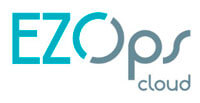Unveiling the Power of HTML
HTML, or HyperText Markup Language, is the backbone of the World Wide Web. Its simplicity belies its immense power in shaping the digital landscape. For those already acquainted with its basics, delving deeper into the benefits and key features of HTML can provide a renewed appreciation for this fundamental technology.
Semantic Structure: Building Blocks of Clarity
One of HTML’s most significant advantages is its ability to provide a semantic structure to web content. Through the use of elements like <header>, <nav>, <article>, and <footer>, HTML enables developers to create websites that are not only visually appealing but also semantically meaningful. This structure not only enhances accessibility for users but also improves search engine optimization (SEO) by making it easier for search engine crawlers to understand and index content.
Cross-Platform Compatibility: Universality in Action
HTML’s universality across different platforms and devices is another key advantage. Websites built with HTML can be accessed and viewed on a wide range of devices, including desktop computers, laptops, tablets, and smartphones. This cross-platform compatibility ensures that content remains accessible to users regardless of their chosen device or operating system, making HTML an ideal choice for reaching diverse audiences.
Lightweight and Fast: Efficiency in Execution
In an age where speed is paramount, HTML shines as a lightweight and fast solution for web development. Unlike heavier frameworks or content management systems, HTML files are minimal in size and load quickly in web browsers. This efficiency not only improves user experience by reducing loading times but also minimizes server load and bandwidth consumption, making HTML an efficient choice for both developers and website visitors.
Extensibility and Compatibility: Seamless Integration
HTML’s extensibility and compatibility with other technologies further enhance its appeal. By incorporating CSS (Cascading Style Sheets) for styling and JavaScript for interactivity, HTML forms the basis of modern web development. Its compatibility with a wide range of web development tools, libraries, and frameworks allows developers to leverage existing resources and integrate new technologies seamlessly, facilitating innovation and efficiency in web development projects.
Accessibility and Compliance: Inclusivity by Design
Accessibility and compliance with web standards are essential considerations in modern web development. HTML’s built-in features, such as semantic elements and attributes like alt for images, contribute to creating accessible web content for users with disabilities. Moreover, adherence to HTML5 standards ensures compatibility with assistive technologies and compliance with industry best practices, promoting inclusivity and ensuring a consistent user experience across different platforms and devices.
Harnessing the Power of HTML
In conclusion, HTML remains a cornerstone of web development, offering a myriad of benefits and key features that make it indispensable in crafting modern websites. From its semantic structure and cross-platform compatibility to its lightweight efficiency and extensibility, HTML continues to empower developers to create dynamic and accessible web experiences. By harnessing the power of HTML and its associated technologies, developers can build websites that not only look great but also function flawlessly across diverse environments, ensuring a positive user experience for all.
